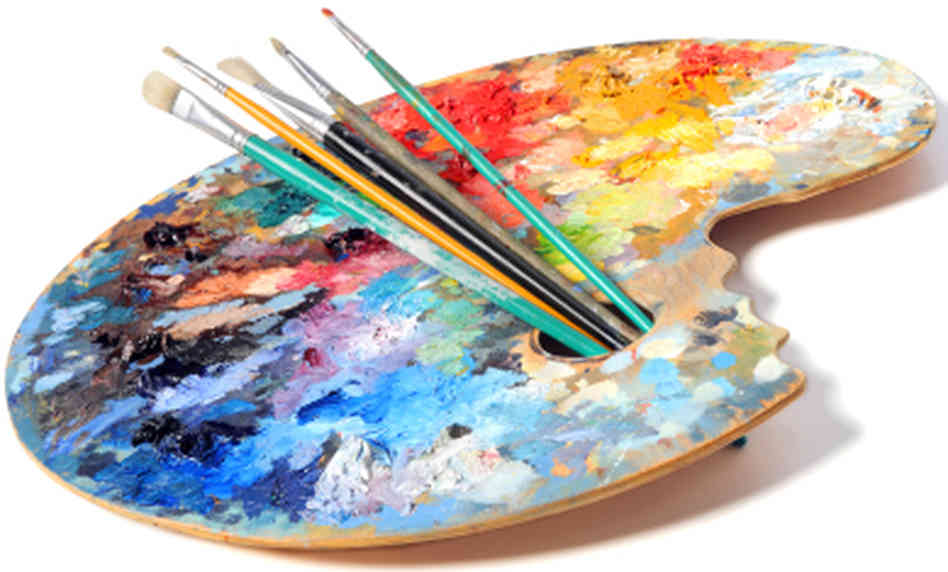How Trump Art Mirrors Modern Political Satire in the Painting World
How Trump Art Mirrors Modern Political Satire in the Painting World
Blog Article
Exploring the Diverse Globe of Artistic Expression: From Surrealism to Abstract Realistic Look
In the realm of imaginative expression, from the dreamlike landscapes of surrealism to the elaborate play of light and kind in abstract realistic look, musicians have actually continually pushed the limits of creative thinking and creative imagination. As we explore the diverse globe of art, we are provided with a tapestry of designs, strategies, and viewpoints that test our understanding and provoke consideration.
Surrealism: Unleashing the Subconscious
Surrealism, an avant-garde creative movement of the 20th century, explored the midsts of the subconscious, revealing a world of dream-like imagery and non-traditional juxtapositions. Headed by artists like Salvador Dali, René Magritte, and Joan Miró, Surrealism looked for to challenge the standard means of seeing and understanding art. Through strategies such as automatism and desire analysis, Surrealist musicians intended to take advantage of the subconscious mind to expose hidden facts and wishes.
One of the key aspects of Surrealism was the focus on the irrational and the incredible. By integrating unexpected elements in their works, Surrealist artists aimed to produce a feeling of disorientation and surprise in the visitor. This disturbance of reasoning and reason was indicated to provoke a deeper expedition of the subconscious and the secrets of the human psyche.
Abstract Realism: Redefining Assumption
Testing standard imaginative limits, Abstract Realism redefines understanding via the blend of well-known elements with abstract kinds. This cutting-edge method to art combines the representational accuracy of realistic look with the creative freedom of abstraction, offering viewers a special visual experience that prompts them to question their understanding of fact.
In Abstract Realistic look, musicians make every effort to capture the significance of their subjects while also instilling their deal with a sense of depth and complexity via abstract elements. By blending the aware of the unknown, these musicians welcome target markets to engage with their items on several degrees, motivating them to explore the nuances of type, color, and appearance.

Cubism: Fragmentising Fact
Using fragmented viewpoints and geometric types, Cubism revolutionized the artistic representation of reality in the early 20th century. Created by Pablo Picasso and Georges Braque, Cubism looked for to test typical ideas of perspective and representation. By damaging down items and figures into geometric forms and presenting them from several point of views all at once, Cubist artists intended to catch the significance of the subject rather than its actual appearance. This method not only deconstructed truth but additionally emphasized the flatness of the canvas, leading the way for future abstract art movements.

Cubism can be categorized right into two main phases: Analytical Cubism, identified by monochromatic color pattern and intricate, fragmented types; and Artificial Cubism, which included collection aspects and brighter colors into the structures. Through these unique phases, Cubism influenced not only paint but additionally architecture, sculpture, and style. trump art. Its impact reverberated throughout the art globe, inspiring musicians to explore new ways of representing the globe and interpreting around them
Expressionism: Emotions on Canvas
Checking out the depths of human emotions through vivid and meaningful brushstrokes, Expressionism became an extensive creative movement in the early 20th century. Unlike previous art activities that focused on portraying the exterior globe, Expressionism explored the internal world of the musician's mind, aiming to stimulate raw feelings and provoke natural feedbacks from audiences.
Expressionist musicians, such as Edvard Munch, Egon Schiele, and Emil Nolde, turned down conventional ideas of beauty and realistic look for misshaping kind and color to convey subjective feelings. The usage of exaggerated brushwork, bold colors, and distorted figures assisted create a feeling of unease, alienation, or enthusiasm in their works.
One of one of the most popular instances of Expressionism is Munch's "The Scream," which captures the extreme stress and anxiety and anguish of modern life through its swirling, altered number versus a blood-red skies. Via useful content their emotionally billed jobs, Expressionist artists sought to test conventional creative standards and provide a home window right into the rough depths of the human soul.
Contemporary Art: Evolving Perspectives

Among the defining characteristics of modern art is its continuous evolution and capacity to adjust to changing social landscapes. Artists are significantly including innovation right into their method, obscuring the lines between the physical and digital realms. This blend of tools allows for cutting-edge methods of storytelling and engaging with target markets in an extra interactive manner.
Moreover, contemporary art often works as a system for social discourse, resolving pushing issues such as identification, politics, and the environment. Artists are utilizing their job to provoke and trigger essential discussions idea, clarifying the intricacies of the world we live in. As viewpoints continue to advance, modern art stays a dynamic and influential force in shaping our social landscape.
Final Thought
To conclude, the world of creative expression includes a broad range of designs and activities, each with its own distinct strategy to sharing meaning and feeling. From surrealism's exploration of the subconscious to abstract realistic look's redefining of assumption, and from cubism's fragmentation of reality to expressionism's representation of emotions, art continues to progress and test viewpoints - trump art. Contemporary art mirrors the ever-changing world we reside in, supplying brand-new means to interpret and comprehend the complexities of our reality
As we explore the multifaceted world of art, we are provided with a tapestry of styles, methods, and viewpoints that try this website challenge our understanding and provoke contemplation. Its effect resounded across the art world, inspiring musicians to discover brand-new ways of standing for the world and analyzing around them.

Report this page